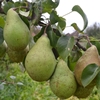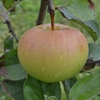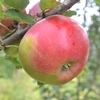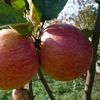Agricultural landscape – green infrastructure
Numbers corresponds with numbers on the board
1.
Nature protection is very often closely related to agriculture and the protection of the agricultural landscape – mowing peatlands or grazing on grasslands is in fact extensive agriculture. Therefore, we must look at our landscape as a mosaic, where each of the elements of the environment – including humans – must be present and none of them can dominate. Groups of trees in the middle of the filed, small ponds, clusters of large trees, bushes, low walls – this are particularly important elements of the agricultural landscape and they play a number of important functions in the ecosystem.
The importance of this type of vegetation in the landscape was noticed by general Dezydery Chłapowski in the 1820s, who in his property of approx. 10 000 ha in the Greater Poland Voivodeship, created an extensive system of tree stands, which significantly contributed to the increase in agricultural production on this farm. Therefore, it is believed that he was a precursor of organic farming and sustainable development of the rural environment.
A.
balks, low walls, grass strips, and hedges are the refuge and habitat of life for many species of insects, invertebrates, and small mammals.
B.
Clusters of larger trees and groups of trees and shrubs are places to rest on the routes of animal migration along ecological corridors.
C.
Meadows and uncultivated land are also a great place for numerous species of insects, including those pollinating crops, and birds.
D.
Small ponds provide moisture to the soil, are a breeding place for amphibians, such as frogs, toads, and a refuge for birds and small mammals.
E.
The strips of trees along the fields weaken the wind force, counteracting drying out, water and wind erosion of soils as well as lodging of crops.
F.
fields of various crops separated by belts of fallow land, meadows and pastures are what constitutes the biodiversity of the agricultural landscape and the basis of the resistance of these ecosystems.
Varieties of fruit trees from our orchard
  | Parisian – French variety known from the end of the 19th century. Frost-resistant. Fruits are aromatic, juicy and with a slightly winey taste. |
  | Boiken – cultivated since the beginning of the 19th century. Late fruiting, sour flesh, perfect for compotes and baking. |
  | Roter Trierscher Weinapfel – a fairly rare variety known from south-west Germany. The fruits are juicy, sour, grown mainly for cider. |
  | Grochówka – a variety known from the end of the 18th century. The fruit has a coarse-grained flesh, which becomes sweet in winter during storage after harvest. |
Photo
About 2 km long alley of old fruit trees (cherries) near Rzepin (Lubuskie Voivodship) – such alleys are precious element of agricultural landscape.













